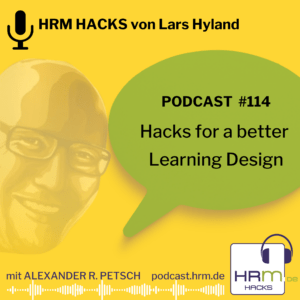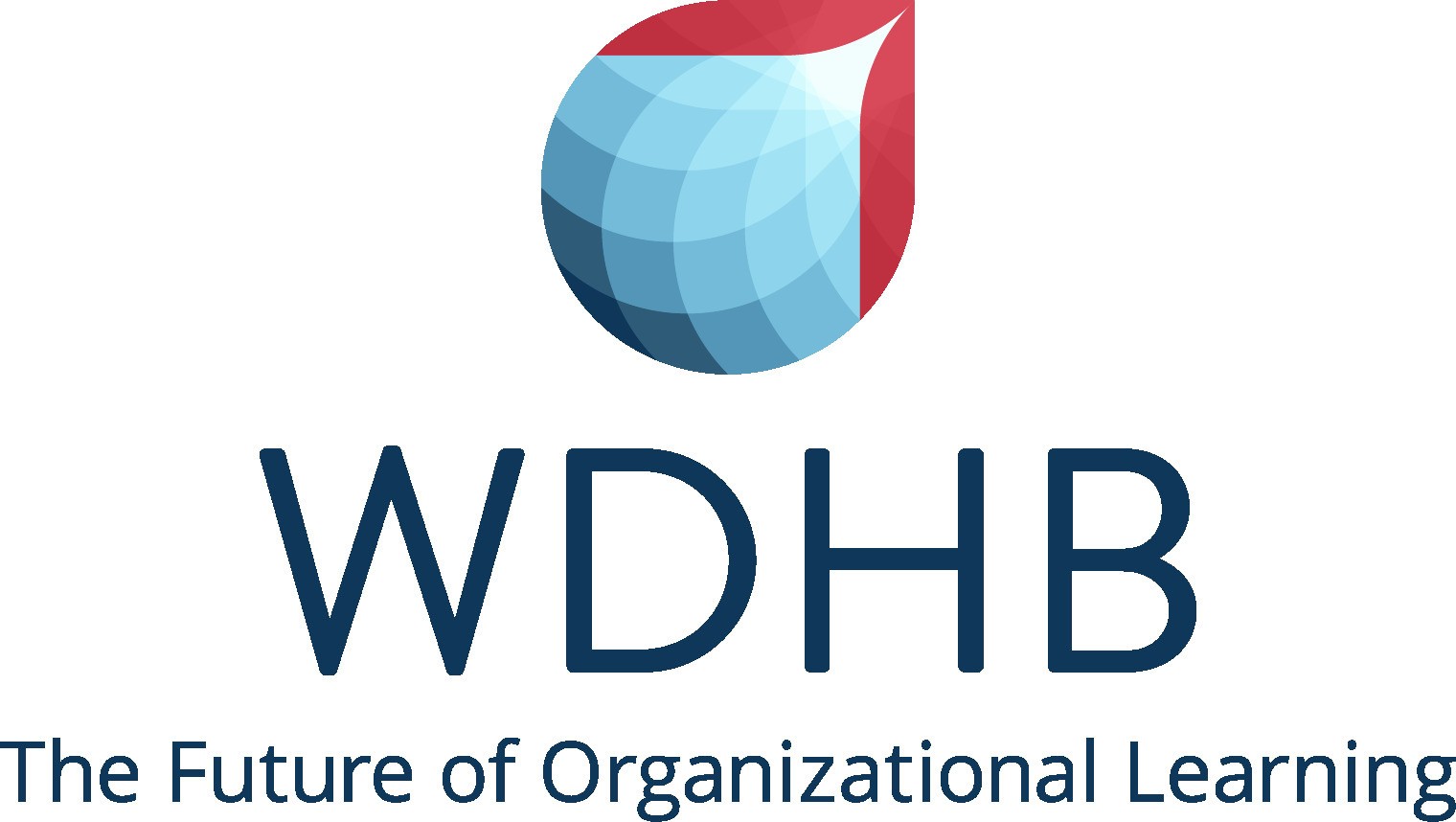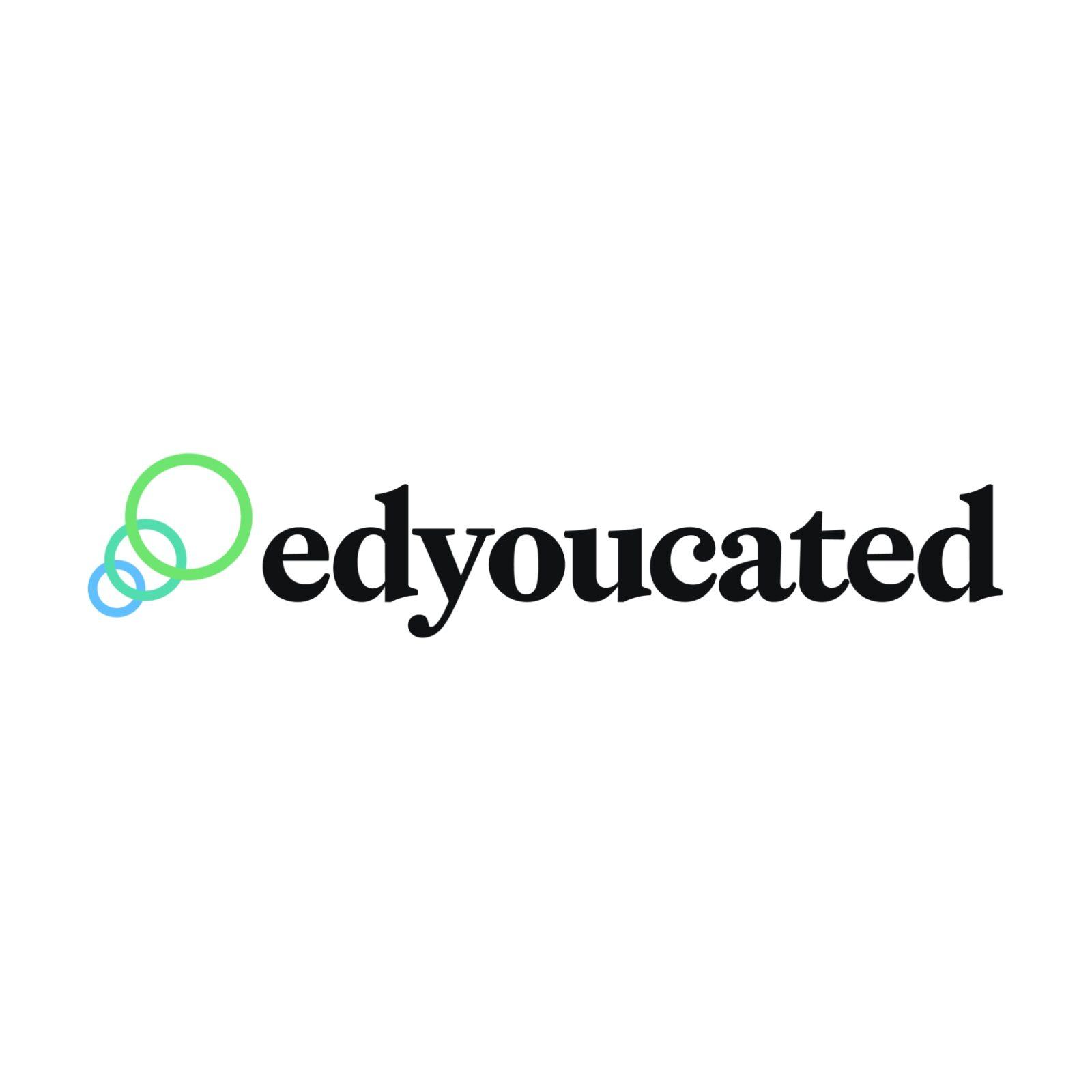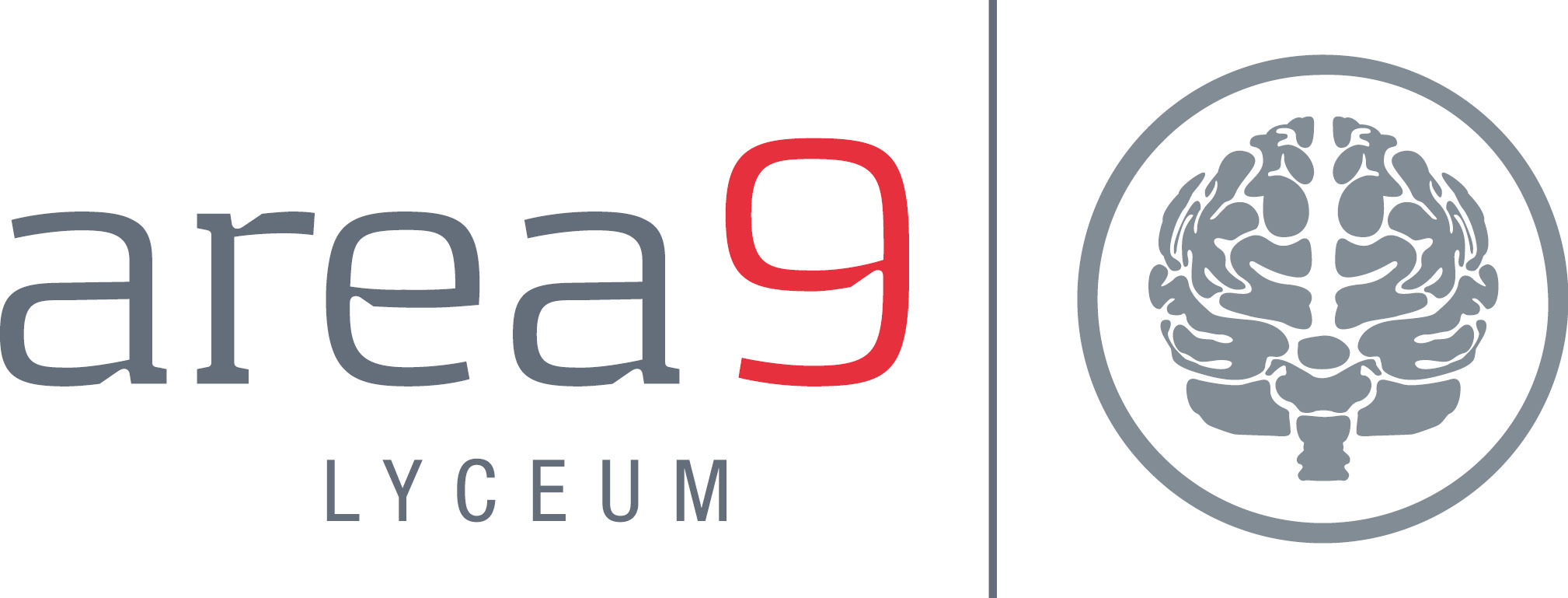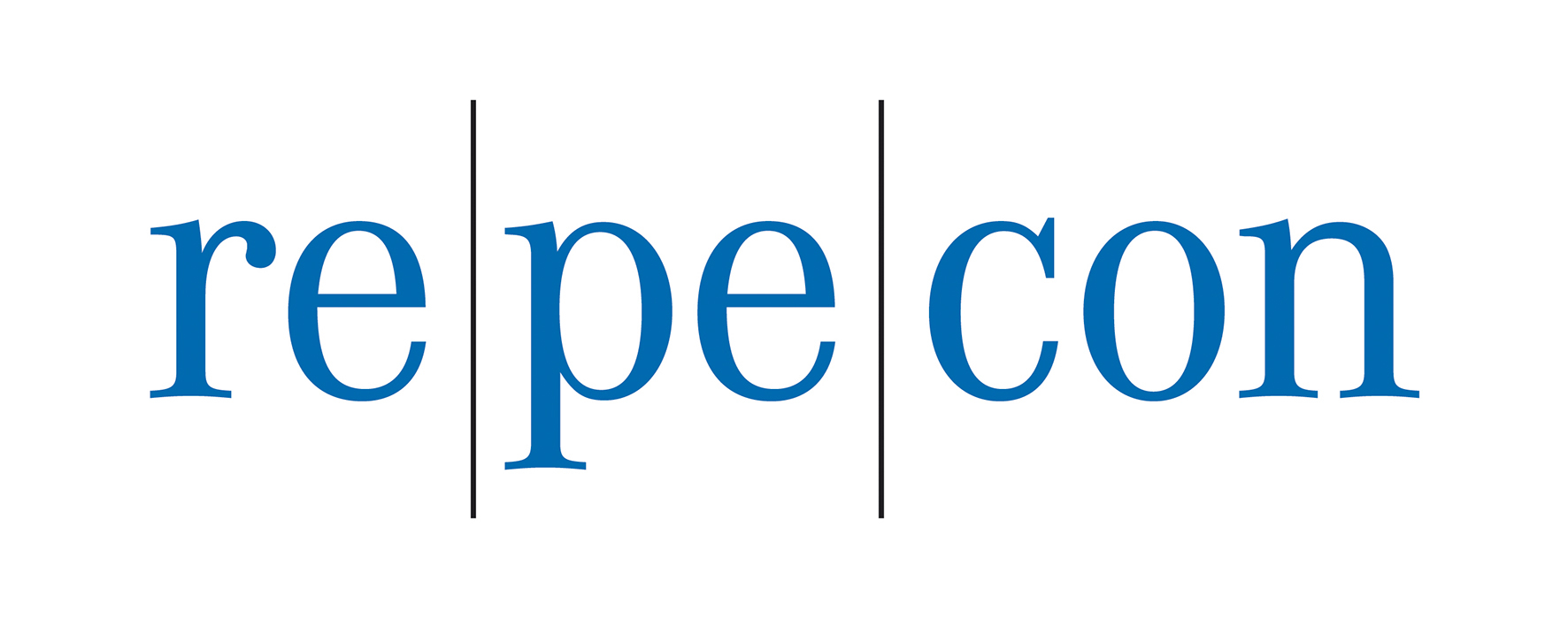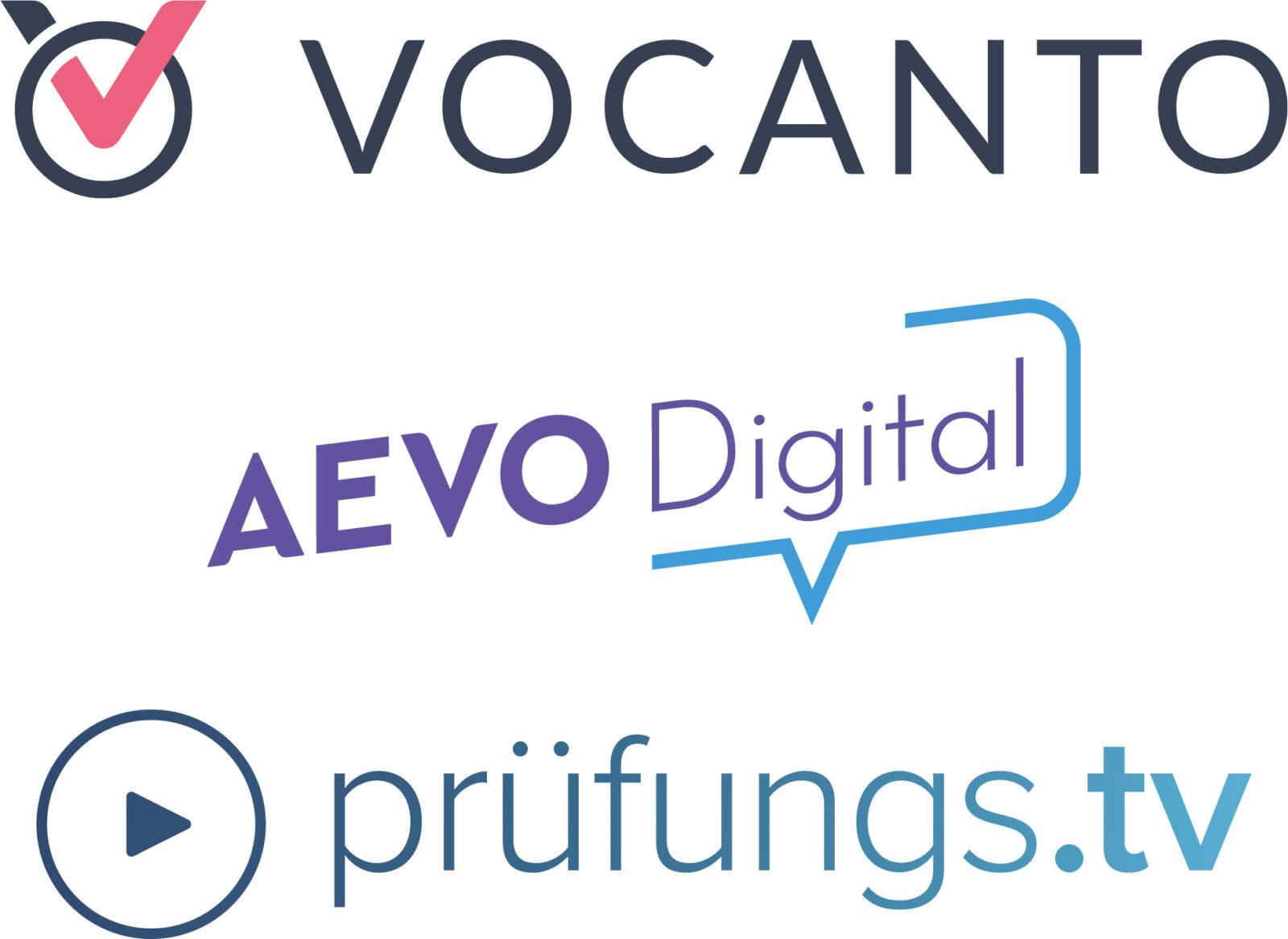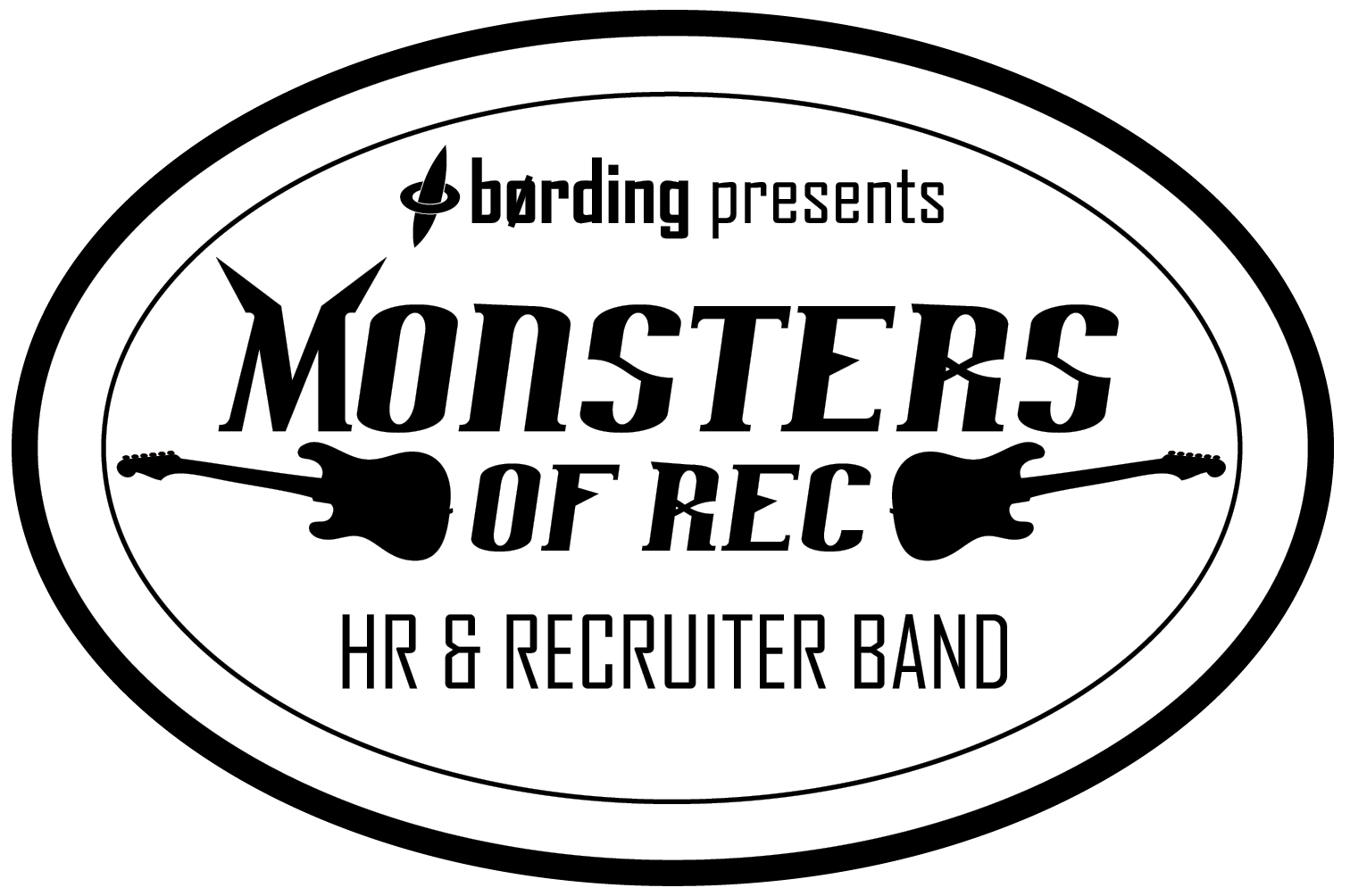Get a design that support your learning experience.

00:00:06
Intro: Die HRM Hacks, Tricks, Tipps und Hilfe für Ihre HR-Herausforderungen und HR-Strategien. Denn der Mensch ist der wichtigste Faktor für den Erfolg Ihres Unternehmens.
00:00:22
Alexander Petsch: Glückauf and welcome to today’s HRM Hacks. My name is Alexander Petsch, I’m the founder of the HRM Institute, your host. In today’s HRM Hacks episode I’m talking to Lars Hyland about hacks for better learning design. Lars is from Brighton and probably some of you might know Brighton from your student exchange a long time ago. And Lars has been working with Learning Technologies since the mid 90s and for the last eight years Lars has been with Totara and is a managing director of Totara. Totara was founded in 2010 and is a provider of the Talent Experience Suite that brings together learning management (LMS) and performance management system solutions such as feedback or engagement. Welcome, Lars!
00:01:18
Lars Hyland: Thank you, thank you. Good to be here.
00:01:20
Alexander Petsch: Yeah, actually, that’s our first podcast in English. All the other episodes are in German, so quite psyched how it will end up.
00:01:29
Lars Hyland: Thanks for being flexible.
00:01:31
Alexander Petsch: Lars, better learning design. Is that about learning solutions?
00:01:35
Lars Hyland: Well, learning design, I think, can often get reduced to thinking about content or you know, courses, whether they be in a classroom or be online. And too often, I think, particularly in the workplace, that reduces down the effectiveness of the learning outcomes that you can achieve because there’s more to learning design, I think, than content. It’s about a whole range of things that impact how people respond to opportunity to build new skills, behaviours, the opportunity to actually practice them, and also the context, the culture, the opportunity for feedback and reflection. And at the end of the day, we’re all human beings. There’s an emotional connection here and effective learning outcomes are very much involved with our emotional reaction as well. So just being able to build all of that into the learning experience that you’re looking to create in your organisation will make a big difference to the outcomes that you’re looking to achieve, particularly if it’s well aligned to your goals. You know, whether they be team goals or company goals or individual learning-oriented goals. So… And too often if it isn’t aligned, you know, for the organisation itself, they can really struggle to see the link between the learning that they’re commissioning and doing and actually seeing the outcomes for their business.
00:03:13
Alexander Petsch: I think you put a lot of hacks already in your first couple of…
00:03:17
Lars Hyland: I did. So that’s number one.
00:03:20
Alexander Petsch: Let’s go back to the start and say, okay, well the format is HRM Hacks, so all my guests bring in their hacks for… Yeah, this time for a better learning solution. So learning design. So what would be your first hack to start with?
00:03:36
Lars Hyland: Well, just to sort of unpack what I was saying before, it’s to think carefully about the learning outcomes you are looking to achieve. When I say learning outcomes, what I really mean is the performance change or the behavioural change that you’re looking to see in the audience that you’re supporting. And that if you reduce it just back to the training course or whether that be in the classroom, as I say, or interactive experience, then you’re missing a lot out. So I would say look beyond the content, look for providing that content in a context. What I mean by that is that the content is meaningful to your audience, that they can see how they can put it into practice. And that often means interacting with other people around that content so that you can put it into practice as quickly as possible. And then invite people to comment and feedback on what that experience is like. That way the emphasis is on deliberate practice of the learning content and design that you’re looking to deliver. So it sounds like a lot, but actually it’s a much more natural way in which to build out a learning experience. It doesn’t necessarily need to take more time or budget to do this. But it does need some consideration and some skills which you can pick up through guidance on this. In fact, there’s a technique called action learning, action learning model, which embodies a lot of this. It brings all of this into a consistent sort of methodology, if you like, around how to build a learning culture, an intentional learning culture. And what I mean by that is that you are looking beyond the straightforward content consumption, whether that be attending a course or completing the action of reviewing some online materials. You’re looking at bringing learning much more into the flow of work and recognizing that learning is part of your work. It’s not a separate thing.
00:06:01
Alexander Petsch: I picked 4 or 5 hacks out of your first hack answer. Well, you started with let’s think about the outcome and the behavioural changes that you want to achieve. And when you think about the learning design… So start with your goals, I would say.
00:06:21
Lars Hyland: Yes. And when it comes to designing learning, you know, there’s a danger that we… As I say, we see it as a simple set of things and if we are serious about the outcomes, if we’re serious about making some differences to the people that we’re supporting, then we do need to consider all of these other dimensions of the solution itself. So it’s critical that as learning professionals, we acquire that understanding and those skills to be able to support people in this more unified and rounded way. Otherwise there’s a real danger that… And I’m sure we’ve all been there where we’ve been asked by leadership in an organisation to create a training program, usually with too little time and too little resource available to you, and it defaults to creating, you know, some learning resources and courses that people need to just be pushed through. And if that’s the context in which people are consuming or being supported, then it’s not a surprise if, you know, while you might get the tick in the box in the LMS that’s been completed, it’s not a surprise that it doesn’t necessarily make a difference to the organisation itself.
00:07:42
Alexander Petsch: So I think one of your… Let’s put it… Let’s call it the second hack would be think about the learning design in terms of feedback and flow of work. Get it into… Also into practice. Get it…
00:07:58
Lars Hyland: Absolutely.
00:07:58
Alexander Petsch: …you know, into action.
00:08:01
Lars Hyland: Yes, that’s absolutely right. You learn through doing and you need the opportunity to practice in a safe way. And you need to be able to practice with feedback provided to you. And that’s either you can simulate that, you can create simulations and scale a learning experience in that way if you design it very carefully. But also if you introduce feedback from your peers and from your team leaders and managers as well, that’s a powerful way in which to get real guidance on how you’re applying that learning in the work that you do. And we need to include that in the bracket, in the definition of learning design. It includes that activity of putting it into practice in a real context. So you do need to include stakeholders in that. You need to bring your managers on board for that, to allow for that to happen and to allow for that opportunity to collaborate with others who are learning in a similar way. So it’s very much part of, I think, any successful learning design that you bring all of those elements together.
00:09:14
Alexander Petsch: And you probably add then some reflection. And that’s what I meant with feedback and reflection and to get it connected.
00:09:23
Lars Hyland: Yes, to get it connected into the real work that you do. Because if it doesn’t make it there, then you may have thousands of people doing training courses who leave their work, do the training, may have a good time, come back into their work, but don’t change any of their behaviour or their habits or actually give you the productivity and performance benefits that you were looking for.
00:09:49
Alexander Petsch: Are there tools, tricks, strategies that you would apply to get that across into action?
00:09:58
Lars Hyland: Well, that’s right. So I mentioned action learning as a design methodology. And that’s sort of in the… If you were to take that as a start point for every project and request that you have, then you will be very close to delivering these outcomes that I’m talking about. So adopting action learning principles really does align your learning to real business goals so you get those better outcomes for the individual and for the organisation as well.
00:10:30
Alexander Petsch: For the listeners out there who are not familiar with action learning, what is the main method?
00:10:37
Lars Hyland: So the principles are that you bring groups together. And when I say together, they can be physically together, and traditionally it would be physically together. But now it’s definitely, you know, virtual. You would bring groups of people together to learn a specific topic or solve a problem. So you define the goal, you define the problem. And within that problem, there will be learning opportunities. So you connect people to those learning opportunities, both formal… So there may be some… For example, let’s take an example of you want to improve the skills of your sales people in terms of how they negotiate. That’s an example. So you might want to bring together an action learning group. You don’t have to call it that, but essentially a group of sales people learning together on negotiation skills and some of them will be more experienced than others. But that’s a good thing because they can share and collaborate. They’re based on their own experience. But for those who need the basics, then you can connect them to, say, an interactive learning module on your learning management platform. Those people can complete that. They can then discuss that and then they can practice that as part of a group based around a real sales opportunity. So there will be a real issue, a real opportunity that they would need to practice this negotiation or to identify the best way in which to negotiate and support the successful outcome of that sales opportunity. So the characteristics of that are different to putting your salespeople on a negotiation skills course and then expecting them to be able to be better. Instead, you bring people together around actually achieving a real outcome and from that you draw in the learning that they need. So that may well be a negotiation skills course, an abstract one that takes them out of their workplace, and brings them back in. They bring the outcomes of that to the group. The group can share their experiences and then they can go forward and actually try and win that sales opportunity. And from that you get an experience that you can then reflect on and then reapply and improve the next time. So the learning design is encompassing all of those elements and I think that’s the main hack, if you like, that I’m trying to communicate, is it’s not just a separate thing learning. You’re learning all the time and you learn through application and it’s important to think about that and include that in the design thinking that you apply across the board.
00:13:25
Alexander Petsch: Okay. So if you look further down the road, what would be your next steps?
00:13:33
Lars Hyland: So I think the other trends that we need to respond to as learning professionals is that when it comes to focusing on business and company outcomes and supporting people to improve their skills, you know, we’re going to be needing to do that at a faster pace than we’ve ever done before because change is very fast. You know, we’re feeling it every day now. It used to be perhaps every year something significant happens. It feels like we’ve gone through every month, every week. It’s now every day. Maybe it’s every afternoon and morning now, but something quite significant will affect us. You know, whatever industry you’re in, the sector you’re in, wherever you are in the world. And how do we support people in that accelerated environment? We need to enable people to learn and find their learning opportunities themselves to build that confidence. And to do that, it actually recognises that we need to be more unified in the approach that we take. So we may be sitting in a learning and development team, but we’re part of a wider people function and there are other activities that impact what people are doing at work and how they’re being guided. And so what we’re doing, particularly at Totara, is trying to build the much more unified, what we call talent experience. So that’s the learning. It is the performance feedback and the collaboration opportunities actually underpins the way in which people can perform better in their roles and to feel comfortable in an environment that’s going to be highly changeable. So what that means is better coordination with other teams in the HR people function so that you can really genuinely say that every individual in your organisation, for example, you know, knows what the resources and tools are that they need to do their job. They know where they are, they know how to access them and they know how to use them. And you can see that there’s potentially quite a lot of learning opportunities required or learning support required just to do that, that when they are working, when they’re actively trying to meet goals, that they get constructive feedback and they get praise and they get recognition for that work at the right time and in an appropriate manner. So that’s about culture really, and management culture. And it means joining up your performance management processes and methods very closely into the normal flow of their work and that the organisation as a whole, so the leadership teams, the management teams, the team itself is very clear about the goals they’re aiming for. And that will then come down to the individual goals for an individual person and their development pathway: What does that mean in terms of the skills they need to do in their job now? What does it mean to do the job, the next job inside the organisation to sort of develop their career options? And that needs to be considered as well so that they can be empowered to really upskill and grow in their role and into new ones. Because right now, if you look out in the world, there’s a scarcity of people with the right mix of skills that allow them to perform really well in this environment. You know, it’s fast moving, the mix of skills is changing, it’s moving from much more working alongside smart technology. You know, that’s really critical. So we need to think about that whole everyday working environment and recognising that learning is really all the way through that. So it’s about changing our own mindset as a learning and development professional to one that’s, as I say, not just about responding to a request for creating, you know, presentation or a piece of content. It’s actually about thinking about how it’s going to be used and supporting that whole environment, because that’s how we’ll keep people motivated and build those high performing teams for the longer term. And that’s how we’ll keep people in our organisations, you know, talented people, rather than lose them to your competition.
00:17:47
Alexander Petsch: I think the… You call it unified talent experience that you just described. I think it gets more important because within the HR function, the whole topic of learning and learning design is much more needed. Also in the context of recruitment, skill shortage and people development, kind of like breaking down these formerly very different departments or functions into a talent development, talent recruiting, and talent development situation where you combine that or where you plan that together. I think that’s going to be one of the big developments for the next years to come.
00:18:35
Lars Hyland: I think you’re right. I mean, it’s something I’ve been involved with quite a few years, has been looking at solutions for onboarding new staff. And in fact, onboarding can start before they’ve even formally started at your organisation. So part of the recruitment experience or hiring people in is increasingly, you know, it’s important to be able to bring people in, bring people up to speed as quickly and as smoothly, and in a way that embeds them into your organisation. So you’re connecting them with people and with the tools they need to do their job well. We talk about helping organisations bring people into their organisation and put them on like a virtuous talent cycle. So what we mean by that is, you know, it’s all self-reinforcing. They feel when people come into your organisation, there’s a very real risk that they’ll be lost. You know, they don’t know… They… My point before, you know, the opposite can be true. You know, they won’t know where the right resources are or the tools or the right people to talk to. They won’t get any feedback on their job if they’re left too much on their own and not being supported. You know, if they don’t really… If they’re not being told what their goal is, how can we actually measure how well they’re performing? And if there’s no opportunity to practice or to give them opportunities to improve their skills, then they’re going to stagnate. And that’s… We’re seeing that trend very significantly that people in organisations value those companies that value real learning and development. And if that’s not there, then people are moving into organisations that do. That seems to be higher up the list for people in terms of their expectations for work. So I think that’s… It’s all part of onboarding. It’s all part of bringing people into the organisation smoothly. That means it has to, you know, the learning design is part of the hiring process as much as it is anything else. And in fact, if you think about the whole life cycle of an employee, good organisations think about people who leave as well. They think about making… Sometimes you do have people leaving. In fact, we’re seeing that right now, particularly in the tech sector. People are leaving in quite large numbers. Some of those companies are supporting that, those exiting employees very well and others are really not doing that at all, depending on their culture and their approach. But it’s all about your company’s reputation, ultimately, because you won’t attract good talent if you’re not supporting people both in and out of your organisation in a…
00:21:26
Alexander Petsch: I think that’s also a real big chance for the smaller and mid-sized companies that you can really manage a talent pool of people that used to work for you and still keep good relationships. I think, you know, if I look at the big tech companies that are now reducing their staff by the thousands, it’s going to be a big challenge for HR to keep these people in the talent pool. But if you’re looking at a normal HR process, I think there’s a real chance.
00:22:05
Lars Hyland: Yeah, absolutely, absolutely. And I think that’s to our… You know, the general point is that things are much more interconnected. Both, you know, us as people are, you know, the advent of LinkedIn and other tools that enable us to reach out and connect with anyone, anywhere, anytime. And it means that mobility for those who have got skills and talent is much higher than it ever used to be. So the cycle is accelerating. It’s a natural cycle. But as an organisation, we need to be able to respond to that speeded up cycle. And so that means, yeah, bringing more people in a more managed manner, support people so they will stay with you as long as is sensible and practical. And, you know, that can only provide stability for an organisation in a world where things are changing really rapidly around you.
00:22:59
Alexander Petsch: So you have to break down the silos within your HR function.
00:23:03
Lars Hyland: You certainly do. And to my point earlier about we need better communication between our teams inside the HR function. And too often people are operating in silos. So, you know, the L&D team, the communications team, the performance management team, the leadership special projects team, you know, and they all compete for our attention. They all compete for us to, you know, respond to their particular projects. But by doing that, we’re too often training people to ignore us. You know, the notifications that you all have in your email box or communications apps can either be highly personalized and supporting you or they can be noisy and they can be conflicting and you ignore them. And I would wager, I would bet that a lot of organisations find themselves with a very noisy inbox.
00:24:04
Alexander Petsch: Yeah, true. I mean, one of the hot topics, of course, at the moment is AI.
00:24:12
Lars Hyland: Indeed.
00:24:13
Alexander Petsch: You have a have a hack on that?
00:24:16
Lars Hyland: I certainly do. I mean, that’s an example of something that’s been building for a number of years, to be honest and fair, but has really exploded just in the past few months or weeks even. And if you think about how fast things are moving, well, AI and its practical impact has just been exploding, hasn’t it? So literally every week something interesting and quite impactful is happening. So as learning designers, you can look at AI tools such as ChatGPT and other sort of large learning model AI tools and you can see them as… You can actually see them being used to generate very quickly and very cheaply the sort of basic learning content that a lot of people spend a lot of money and time currently creating manually. So I feel that if you look at it that way, you might feel nervous if you’re a content designer and you should be if you’re not going to change with it and start working alongside the tools. So my view, my recommendation, is that you try these out and that you recognize that they’re your friend, not your foe, that you can use them to generate better content in a much more practical time scale than you could before. And not just content, the whole design experience. So you can have more variety in the learning activities that you might put into your learning designs. You can rapidly create, not just text, you can rapidly create images, you can rapidly create video. I mean, it’s amazing what you can do if you combine all of these together that you can have an AI chatbot that is in real-time animated and almost virtually indistinguishable from a real person. And being able to embed that into your learning design, that’s not far away. In fact, it’s already happening. People are already experimenting with this right now. So I’d very much advise people to have a try. It’s not difficult. The hard bit is getting good results out of it, you know. So garbage in, garbage out. If you have basic prompts going in, then you may get poor results out. But one thing to watch out for is that if your existing learning content and design approach is simplistic and actually hasn’t been aligned to generating good learning outcomes, then yeah, the AI is going to come along and do the simple stuff very quickly for very little money and will just very quickly show to management that, well, that didn’t cost anything. And because it didn’t cost anything, it didn’t really generate any outcomes. Why are we doing it at all? So it accelerates some of the thinking around what we’re doing.
00:27:17
Alexander Petsch: One of the hot topics at the moment, of course, is AI. You have some hacks for learning design in the context of how to cope with AI?
00:27:29
Lars Hyland: Yeah, sure. AI is very much being talked about and for good reason. It’s really come into the mainstream as these tools which have been in development for many years now and now benefiting from huge improvements in computing power. What’s driving these things is that we’re seeing that quite sophisticated outcomes can be achieved both in text generation, chat experiences, conversational chat with these tools and it has an impact. It has a real strong impact in what we would do when you apply it to learning design and learning content and learning experiences. So on the one hand you can see that AI could replace a lot of what I would call fairly basic learning content creation. And what it does is it puts the emphasis on how to really demonstrate that materials you’re creating will have higher impact. And the good news is, is that these AI tools essentially allow you to do more in less time if you’re very mindful of the outcomes that you… And guiding the prompts that you give to these tools so you can create content outlines or curricula, you can create additional reading very quickly. You can ask it to create the whole sections of content around standard topics. And all of this can be done in literally minutes. So instead of weeks, it can take a few minutes depending on what you’re focused on. The real skill is in evaluating its outcome. You know, is it telling you the right things? Is it complete? And that’s… And it’s learning very fast. But you can also generate images, you can generate video, you can even put all of them together and have a virtual person coach interacting with you personally as an individual. So this might sound far fetched, but it’s not really. It’s actually coming very rapidly. And we’re talking this year, next year, we’ll see this in practical application.
00:29:36
Alexander Petsch: I would even add another hack because for me the last weeks were just… I call it an iPhone moment. You know, when the iPhone entered the phone market, it was not anymore about making a telephone call. It was about a platform, an app store, an open platform. And what we see with ChatGPT is that they created an engine that you quite cheaply can use for your own data and purposes and knowledge. And I think we will see unbelievable solutions built by providers or even by the organisations that use that engine, that train that engine, that learn, that educate the engine with your own data or with your own knowledge experiences in order to create a new learning experience for others. And I think in that respect, we are just at a very great moment, a very bright moment, and I think we will really see a lot of changes in learning because of that.
00:30:47
Lars Hyland: I think you’re absolutely right. And I can give everybody a book recommendation if they’d like to get a glimpse as to what used to be, you know, a science fiction future, it’s now feeling very, very real. There’s a great book by an author called Neal Stephenson. He’s an American author, and he wrote the book “The Diamond Age”. I’m not sure if you’re familiar with it, but it tells a great story. It’s not the main plot, actually, but it’s subtitled like “The Young Girl’s Primer”. And the reason is, it envisions how a young girl learns using some very similar technology to what we’re experiencing now. So if you want a glimpse into that and it’s a very well written book, it’s called Neal Stephenson’s “The Diamond Age”.
00:31:31
Alexander Petsch: We will put it in the show notes. Yeah, and you can then easily find it.
00:31:37
Lars Hyland: Yes, indeed. There’s another book I wanted to mention as well called “Exponential”. This is actually talking about how rapidly things are changing around us. And you know, the ChatGPT AI tools like this are the most recent thing that’s changing things quite fundamentally. But there’s plenty more coming down the track. It’s affecting lots of other sectors, technology itself. How we are responding to that as governments and as society. All of that is really quite impactful and it absolutely affects the way in which we organize ourselves in companies themselves. So there’s some big, big things there. There’s big, big, big changes ahead. But they can be very positive.
00:32:19
Alexander Petsch: Yeah, I couldn’t have imagined half a year ago that I changed my search habits.
00:32:26
Lars Hyland: Indeed, I know. Who would…
00:32:28
Alexander Petsch: It’s crazy.
00:32:29
Lars Hyland: Well, exactly. And it’s interesting through some of the, you know, work that we do. And just exploring this a bit further, one practical outcome, one practical negative outcome from ChatGPT is introduction. And also, you know, Microsoft with Bing and other integrations, the sheer volume of content that’s being created out there is slowing down Google’s ability to even index it. So content is getting less visible as a result. So there’s a sort of strange inverse impact here that we’ll get through, but there are some unforeseen impacts to how this transition will play out. So you can see why Google is nervous and why they’ll be coming to market with their own, as will Meta, Facebook. You know, they’re the big ones. And probably Amazon as well. But you know, there’s going to be a lot of change there and hopefully we’re all, you know, positively benefiting from it.
00:33:26
Alexander Petsch: Lars, you have a last hack on learning design…
00:33:29
Lars Hyland: I do.
00:33:29
Alexander Petsch: …that you want to share?
00:33:31
Lars Hyland: I do, because I think I’ve talked about some big grand themes, you know. They’re quite big, you know, talking about a unified talent experience, that’s quite a big thing. It needs integrating, you know, liaising with lots of other people in your organisation. And then I’ve talked about learning design and how you can really think more holistically about it. But actually, when it comes down to real change in the organisation, it’s often the small quick wins that you can rapidly scale that make the difference. And I’ll give you a very, very silly… Not silly. It’s actually everyone I speak to when I mention this… It’s interesting how people respond. But you can have people using technology. Most people don’t use it optimally. That’s the sort of truth of it. We have technology all around us, including our phones and other things. People use it to different levels of capability. But when it comes to little performance improvements, if you could just speed everybody up by a few seconds by each of their actions that they take in a day, then that adds up to quite a significant productivity benefit. So one example of that is just that keyboard combination of Windows V. So if you use Windows on a laptop, Windows V opens up the full clipboard of everything that you’ve cut and pasted before. It’s like the history. And lots of people don’t know that exists. And so when it comes to cutting and pasting, they’re doing it in a very slow way when they could actually collect up a range of things, cut and paste them, just look back into the history and very quickly paste in different items that you’ve clipped. So Windows V is my very simple productivity hack, which if everyone in your organisation actually knew this existed and did it, adds up to quite a significant improvement. So it doesn’t have to be complicated. You can do small things like that and there’s plenty of other ones like that when you start asking that question of people. So that’s my tip.
00:35:44
Alexander Petsch: Lars, thank you very much. I didn’t know that, so I will try that out directly after our podcast. And yeah, thanks for sharing your hacks with us and…
00:35:58
Lars Hyland: Thank you. Thank you very much for this opportunity to talk with you and your audience.
00:36:02
Alexander Petsch: And if you out there want to have a check on the checklist that we put together, you can find that on HRM.de. Thank you very much for your hacks and inputs. Good luck and stay healthy. And remember, your employees are the most important success factors for your company and organisation.
